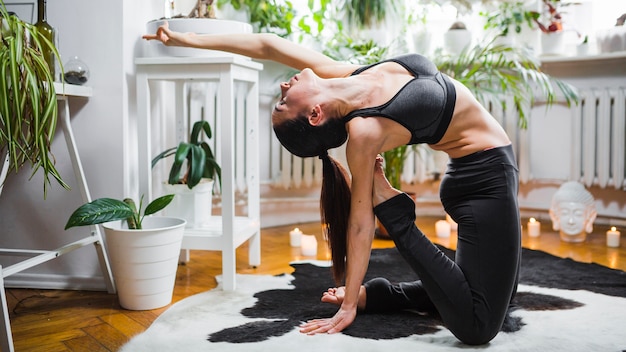
Yoga isn’t just about having flexible limbs; it can boost memory, improve heart health, and strengthen bones, according to Anna Magee.
In the UK, spending on yoga classes and gear has soared to £790 million annually. While some yoga practices have taken unique turns—think rage yoga or yoga with pets—the science behind yoga’s benefits is more robust than ever.
Researchers at UCLA found that a three-month yoga and meditation course was more effective than traditional memory exercises in reducing age-related brain impairment. Additionally, yoga has been shown to improve sleep for breast cancer survivors.
When Lucy Edge, a 53-year-old former advertising executive, faced severe depression, she turned to yoga instead of medication. She traveled to India, immersed herself in yoga, and returned with a newfound happiness and contentment. She has since written several books on yoga and created Yoga Meds, a part of her website Yogaclicks.com, to document yoga’s benefits supported by over 300 clinical trials.
Interested in improving memory? This might be the time to switch from crosswords to yoga. A UCLA study on adults over 55 showed that a combination of Kundalini yoga and meditation exercises, like Kirtan Kriya, improved memory, reduced depression and anxiety, and enhanced stress resilience compared to traditional memory exercises.
For heart health, yoga might be just as effective as traditional exercises like brisk walking. A 2014 review highlighted that yoga could lower heart disease risk by reducing stress and improving factors such as blood pressure, cholesterol, and weight. Yoga’s positive impact on emotional health can also benefit those recovering from cardiac events.
Charlotte Watts, a yoga teacher and nutritional therapist, recommends gentle yoga practices and Restorative yoga for stress reduction. Restorative yoga involves supported postures held for extended periods to provide deep relaxation.
For those dealing with back pain, clinical research supports yoga’s effectiveness. NICE guidelines even suggest yoga as a beneficial exercise for lower back pain. Physiotherapist Sarah Shone has integrated yoga into rehabilitation programs, with a high success rate among participants experiencing pain relief.
Yoga also strengthens the pelvic floor muscles, potentially preventing incontinence and increasing bone density due to its weight-bearing nature. For beginners, starting with gentler yoga styles like Hatha or Iyengar is advisable. Always consult a doctor if you have specific conditions such as back pain for suitable exercise referrals.
When selecting yoga gear, consider where you’ll use your mat and how often you’ll transport it. A durable, thicker mat can protect your joints. For instance, Valka Yoga’s Elephant Cork Yoga Mat is eco-friendly, offers excellent joint support, and becomes grippier with sweat. It’s antimicrobial and odor-resistant, making it perfect for hot yoga. Matching yoga blocks can also assist in achieving difficult poses by offering extra stability.
No matter your flexibility level, there’s a type of yoga for everyone. Yin or Restorative yoga classes use props for support and relaxation, while Vinyasa Flow offers dynamic, breath-linked movements. Iyengar focuses on precise alignments with props, and Anusara combines alignment with flowing movements to upbeat music. For targeted healing, Yoga Therapy offers customized practices to address injuries or illnesses.
Ready to dive in? Find the style that suits you and enjoy the benefits yoga can bring to both your body and mind.




